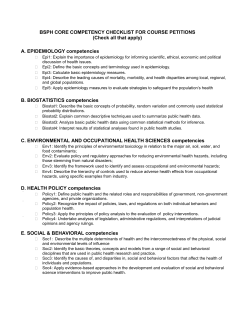
3 Time Horizons of HR Planning
3 Time Horizons of HR Planning Short Term (up to 1 year) Intermediate Term ( 2 to 3 years ) Long Term ( More than 3 years ) Short Term HR Intermediate Term HR Long Term Hr 1. What jobs need to be filled and vacated? 2. How and where will we get people to fill and vacate jobs? Demand : predict organizational outputs in combination with the technology that the organization intends to use, dictate the human resource needs of the organization. 1. Succession planning programs are complex systems designed to safeguard the long-term health of the organization. Supply : 2 basic techniques to forecast internal labor supply 2. The key activities in succession planning are identifying high-potential employees, identifying needed competencies, and providing learning experiences to develop these competencies. Judgmental technique : Replacement Planning Statistical technique 2 steps of statistical method - generating an inventory of current supply - predicting how the supply is likely to change over time Short Term HR Intermediate Term HR 1. Increase applicant pool 2. Attracting different mix of applicants 3. Improving qualifications of new hires 4. Increasing the length of time that desirable employees & decreasing for those undesirable employees stay with the organization 5. Help newly hired employees develop the skills needed by the organization Short-term objectives include attracting, accessing, and assigning employees to jobs, intermediateterm objectives are more likely to include readjusting employees' skills, attitudes, and behaviors to fit major changes in the needs of the business,' as well as adjusting human resource practices to fit changes in the needs of employees. Long Term Hr Short Term HR Intermediate Term HR Recruiting programs are used to influence the size and quality of the applicant pool. Intermediate-Term Programs to Help Employees Adjust to Changing Organizations Selection programs are developed for making hiring decisions. - Technology creates the need for training Performance appraisal systems identify performance deficiencies to be corrected and competencies to be rewarded. - Service-related jobs require new management styles Training programs emphasize developing skills for use in the near future. Compensation systems are designed to attract new employees, to motivate people to perform well, and retain employees - A shortage of well-prepared new hires spurs outreach programs. - Economic conditions force downsizing - Organizations must adapt to a diverse workforce Long Term Hr Psychological testing program to integrate its business needs and long term human resource planning Short Term HR Short-term planning objectives are generally stated in terms that are relatively easy to quantify (e.g., numbers of applicants, numbers of hires & performance levels of employees), systematic evaluation of human resource programs to meet short-term organizational needs is quite feasible, and some types of program evaluations are actually common in large organizations. Intermediate Term HR Long Term Hr Intermediate time horizon encompasses more uncertainties and contingencies because programs are often larger in scope and the appropriate unit of analysis for evaluation is often the productivity level of an entire department or business unit -Presently most of our knowledge about how to develop and improve long-term human resource programs has been generated through trial-and-error rather than through systematic research. Nevertheless, much knowledge about individual behavior and development has been gained by analysis of the massive amounts of data generated by large-scale, ongoing management planning systems. - Evaluation of succession planning programs have emphasized the ability to predict individual outcomes, such as career progress and satisfaction. HOW TO DEVELOP A STRATEGIC HUMAN RESOURCE PLAN 1. Setting the strategic direction 2. Designing the Human Resource Management System 3. Planning the total workforce 4. Generating the required human resources 5. Investing in human resource development and performance 6. Assessing and sustaining organizational competence and performance A Strategic Human Resource Planning Model 1.Setting the strategic direction Recommended actions 1. Conduct an external environmental scan and evaluate its impact on the organization 2. Identify the organization’s vision, mission and guiding principles 3. Identify the mission's outcomes and strategic goals 4. Consult all relevant stakeholders 5. Evaluate the impact of legislation on the organization 2.Designing the Human Resource Management System Recommended Actions: 1.Identify appropriate human resource plans, policies and practices needed to support organizational objectives 2.Identify relevant human resource best practices 3.Conduct an employment systems review 3. Planning the Total Workforce TATAP MUKA MINGGU KE VII Recommended Actions: 1.Determine the appropriate organizational structure to support the strategic objectives 2.Structure jobs (competencies, tasks and activities) around key activities 3.Develop a workforce plan designed to support the organizations strategic objectives 4.Compile workforce profiles, identifying designated groups, an inventory of current workforce competencies, competencies required in the future and identified gaps in competencies 4. Generating the required human resources
© Copyright 2025





















